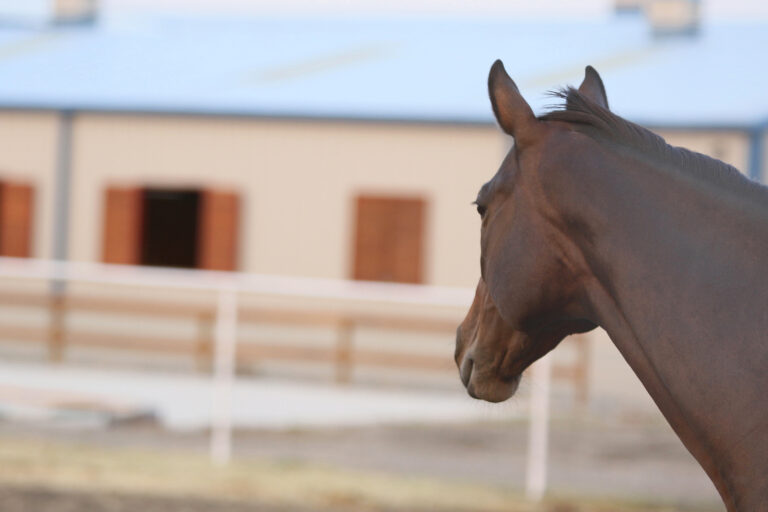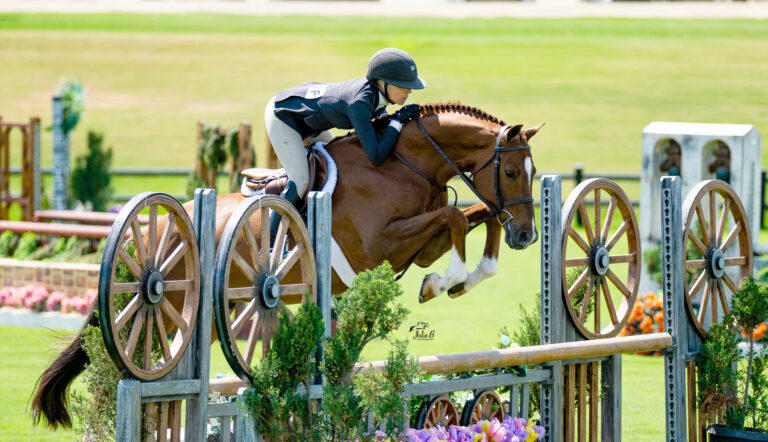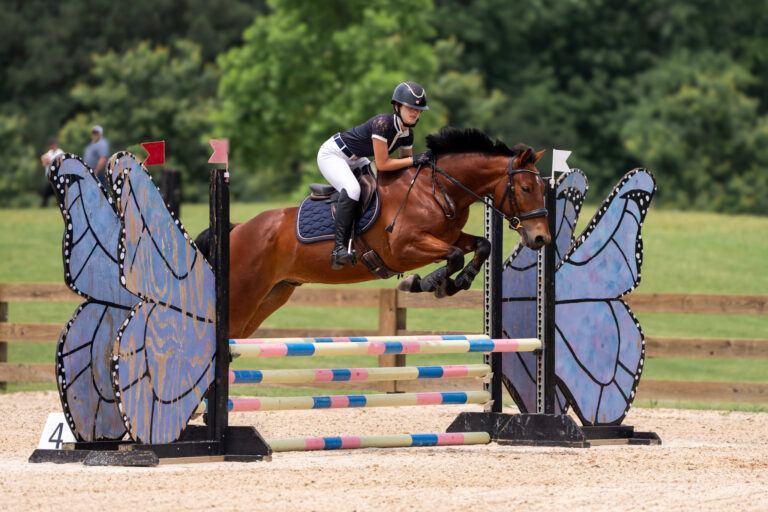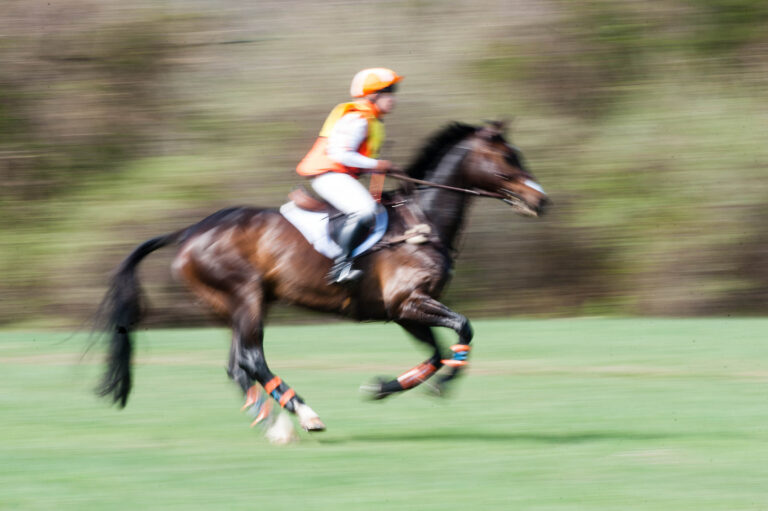Like virtually every aspect of horsemanship, there is no set formula for determining what kind of noseband is best for your horse. “The most important thing is that you pay attention to what your horse goes well in,” notes eventing trainer and competitor Sharon White. “Start with the most simple and basic, then go from there.”
Before you begin experimenting, however, it’s good to get a handle on what a noseband–or cavesson–is supposed to do. To varying degrees and depending on the type and tightness of the adjustment, nosebands are supposed to
- help keep your horse’s mouth softly closed and quiet. This encourages contact with the bit that’s essential for communication and control.
- discourage maneuvers that enable your horse to evade the bit, like crossing his jaw or holding his tongue over the bit.
- anchor a standing martingale.
- help hold the bridle in place.
- balance the look of your horse’s head.
The most common nosebands used in the hunter/jumper, dressage and eventing disciplines are a plain or a crank, with or without a flash attachment, a drop noseband and a figure eight.
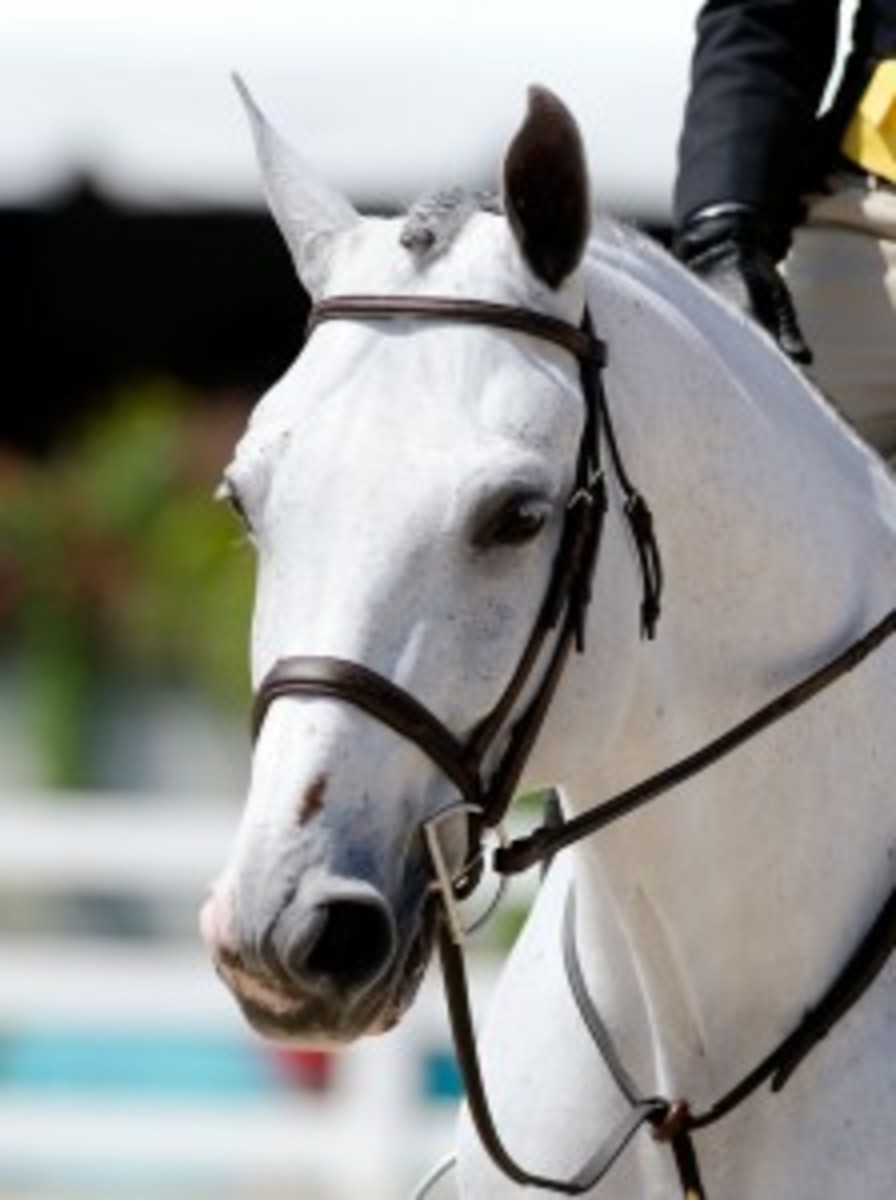
Plain Noseband
Other names: regular noseband, cavesson, plain cavesson, English cavesson
A plain noseband encircles your horse’s nose at a point approximately two fingers’ width below his cheekbone. Set in that position and adjusted so it’s reasonably snug, this noseband is usually suitable for a well-trained horse who accepts the bit without fuss. He doesn’t shake or flip his head when you attempt to make and maintain contact, and he doesn’t root into your hand or hang his tongue out the side of his mouth. Such actions require an open mouth and are often, though not always, indicators that your horse is trying to avoid bit pressure.
Depending on your horse’s facial anatomy and how tightly the noseband is secured, a regular noseband on its own has some ability to prevent your horse from crossing his jaw.
Opinions vary on how much a properly positioned regular noseband can help keep a horse’s mouth shut. A noseband positioned just below his cheekbone hits his jaw at about the midway point and thus can provide some closure. But flash attachments and drop nosebands are considered stronger aids for keeping his mouth closed. “For a horse with a problem mouth, the traditional noseband is not going to manage that as well as a noseband with a flash attachment,” notes top hunter, equitation and jumper coach Missy Clark.
Crank Noseband
Other names: Swedish, cinch, adjustable
This is a regular noseband with a leveraged closure mechanism under the horse’s chin. Leverage is typically achieved by using rings or roller bars on either side, through which a leather strap is threaded before being secured. The leverage allows for a tighter, more precise fit that should distribute the pressure evenly. Because it can be adjusted tighter, a crank noseband is padded in the jaw area.
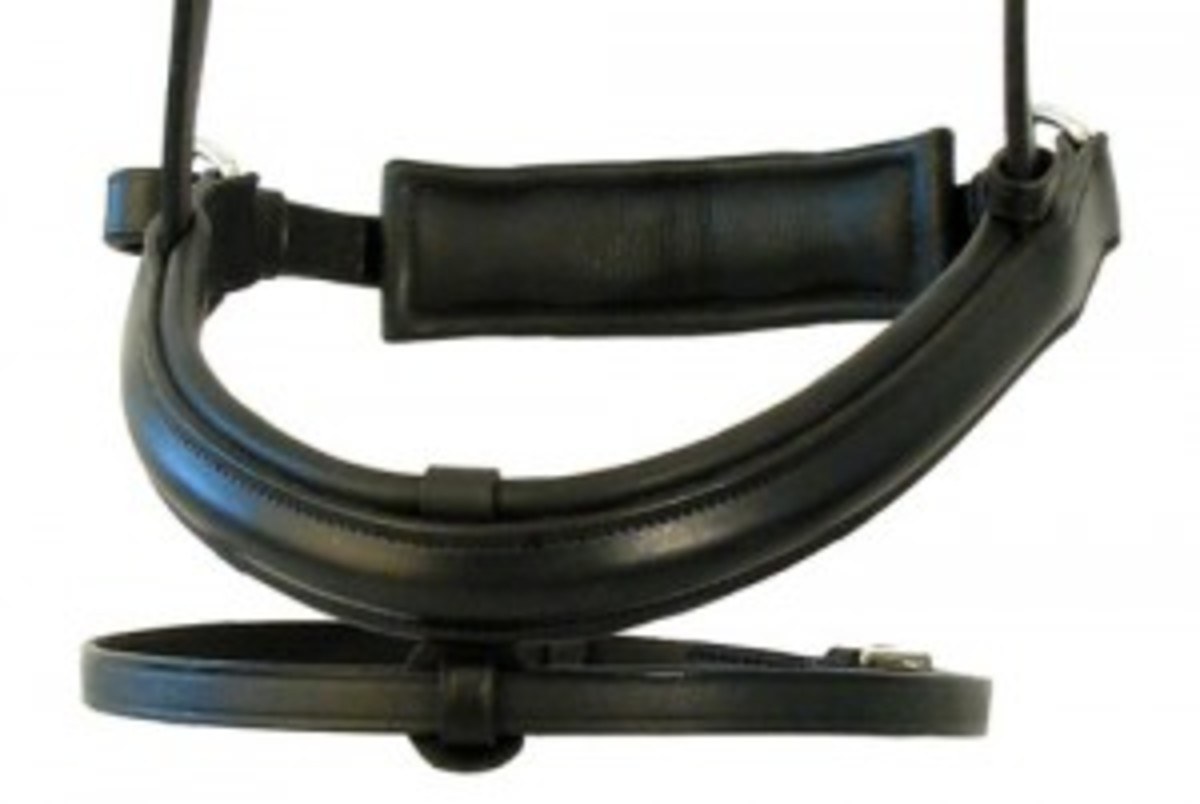
Crank nosebands have long been common in dressage, especially at the higher levels in which horses work in double bridles that don’t accommodate a flash attachment to the noseband (see the section on flash nosebands at right). They are also found in the hunter and equitation divisions, where they are considered a “conventional noseband.”
The crank is a constructive piece of tack when used properly. Its capacity to be fit more tightly than a regular noseband makes it an aid in keeping your horse’s mouth closed and preventing jaw crossing and other evasive maneuvers. Like the plain noseband, it should be positioned at a point approximately two fingers’ width below the cheekbone.
The crank, however, can be easily abused. “I hate the term ‘crank’ because it implies that that is exactly what you do with it,” asserts Lisa Gorretta, a U.S. Equestrian Federation dressage technical delegate and owner of The Paddock Saddlery, in Chagrin Falls, Ohio. She prefers the term “adjustable” for this noseband.
“It can help you have a better fitting bridle by having it snug but not overly tight,” she continues. “Unfortunately, a lot of people think that if a little is good, a lot is better.”
Worn too tightly, a crank can close your horse’s jaw too much, preventing the muscle relaxation necessary to maintain soft contact with the bit. It can also press his cheek against his teeth in a painful way.
Flash Noseband
Other name: Aachen
This is a thin strap attached at the centerpoint of a plain or crank noseband. The strap drops down at an angle below the bit and is secured under the chin. It is very effective in keeping the horse’s mouth closed, so much so that it’s actually called a “mouth closer” in Germany.
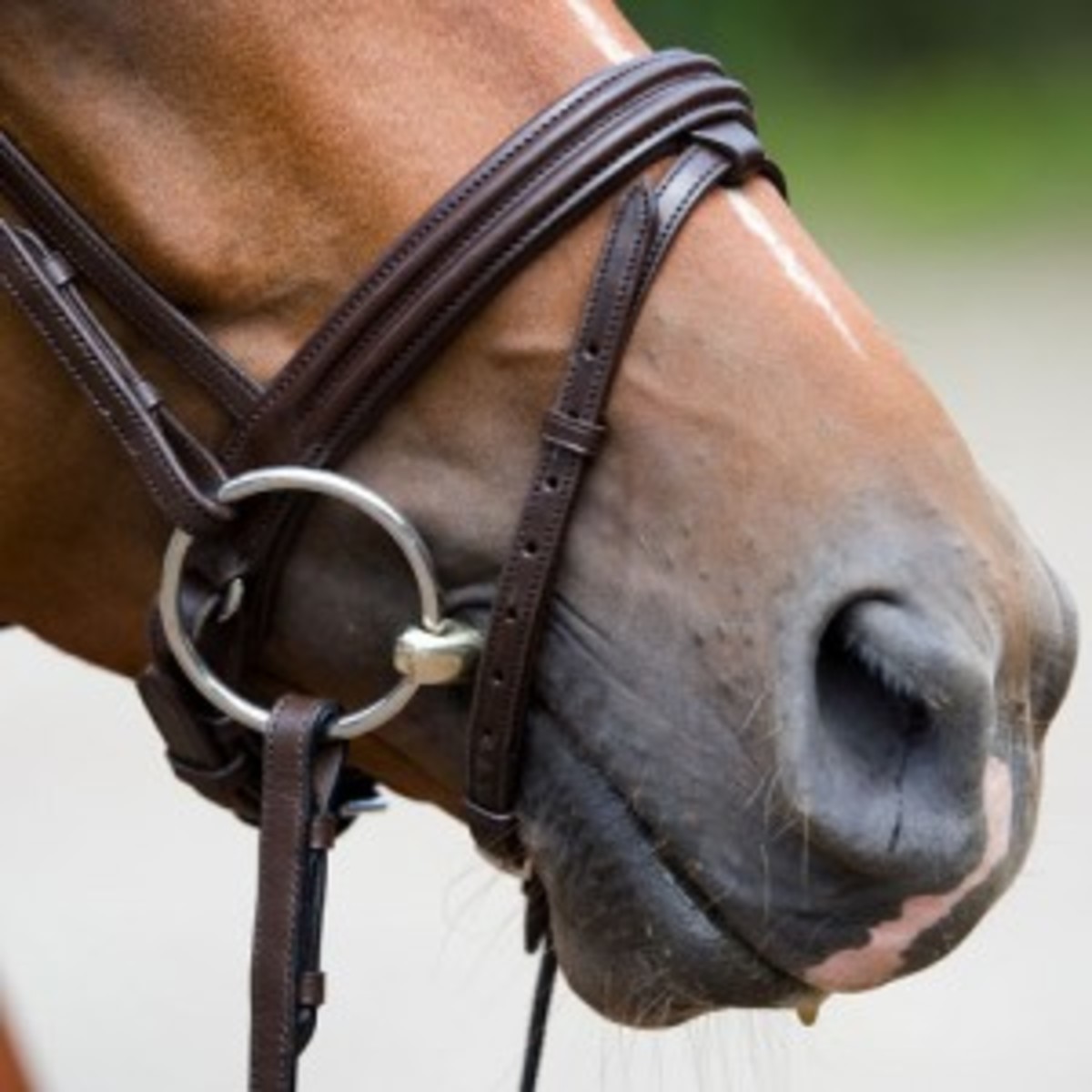
Thanks to its position low on the head, it is also used to prevent your horse from crossing his jaw, putting his tongue over the bit and attempting other evasive maneuvers, all of which require him to be able to open his mouth more widely than needed to engage correctly with the bit.
The flash was developed to help close the mouth while also having a noseband that can anchor a standing martingale. It has become ubiquitous in the jumper ring and in schooling for all divisions.
Some flashes are attached to the noseband via a permanent loop. “Convertible” or “removable” flashes are fastened to the noseband with either a detachable strap that goes around the noseband or by using a discreet slot in the noseband through which the attaching strap is threaded.
Correct positioning is critical for the flash to do its job properly, Lisa notes. The first step is securing the regular noseband correctly, approximately two fingers’ width below the cheekbone and running straight around the horse’s nose. Then the flash can be secured under the chin groove, followed by checking that the noseband has been cinched tight enough so the flash doesn’t pull it down on your horse’s face. The center point of any noseband should always rest against the nasal bone as opposed to the soft cartilage near the nostrils. Securing it too low, over the cartilage, can restrict your horse’s air intake, which is critical in any work and especially for cross country, jumping and galloping.
Lisa notes that riders sometimes think they are doing their horses a kindness by securing the noseband a little loosely, then compensate by adjusting the flash very tight. That can pull the noseband down, thus lowering the flash’s anchor point and placing it too low on the nose.
Drop Noseband
Other name: Hanoverian
Invented by a German trainer who worked at the Spanish Riding School, this noseband encircles the horse’s nose at a lower point than its regular counterpart: below the bit and at a point parallel to the horse’s chin groove, yet still resting on the nasal bone.
Worn properly, this noseband is a clear reminder for your horse to keep his mouth closed and prevents him from crossing his jaw. It’s a popular aid in training young horses who are just learning to accept the bit. The drop used to be quite popular in dressage, but that has given way to crank-with-flash combinations. Some riders and trainers say that the drop’s low position on the nose makes it less flattering to the look of their horses’ heads and attribute its decrease in popularity to that. The drop’s placement also makes it unsuitable for attaching a martingale.
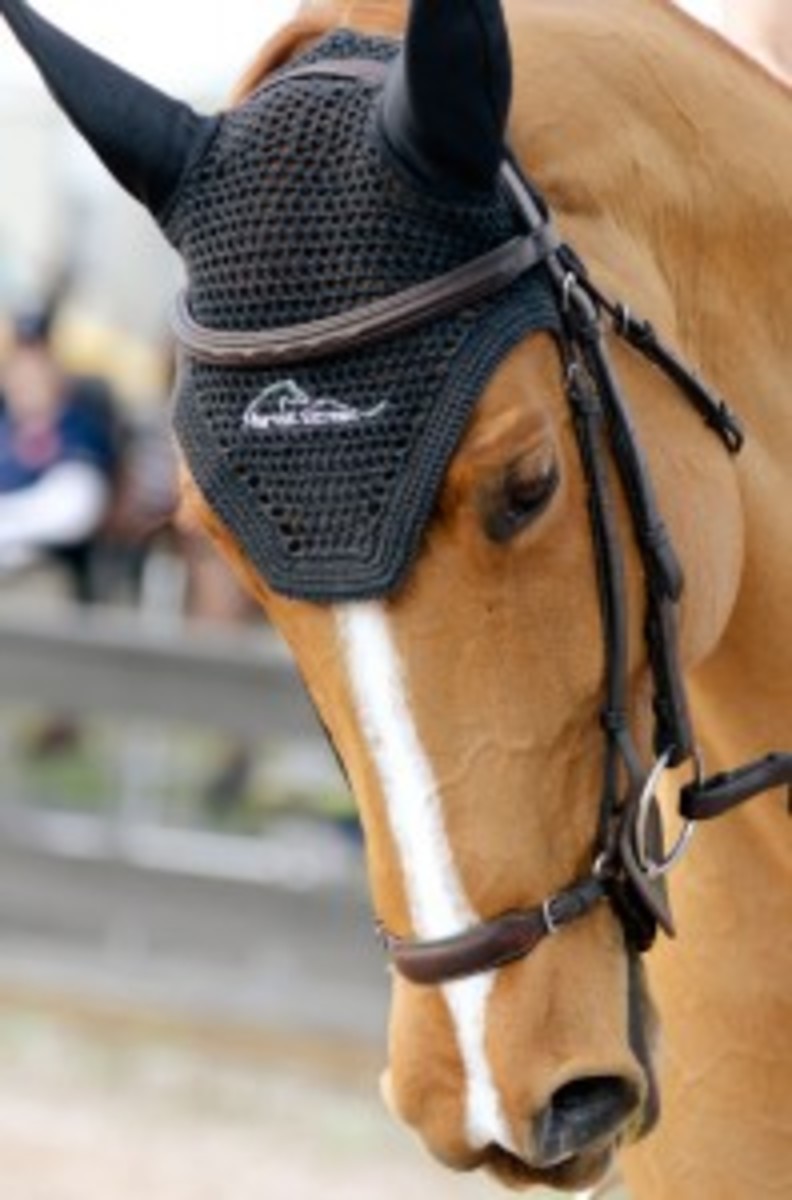
Figure Eight Noseband
Other names: crossed, Grackle, Mexican

The straps of this noseband are fastened with a buckle behind the upper jaw above the cheekbone. Then they cross the nose on a diagonal, extend down underneath the bit and are fastened with a second buckle at the chin groove. It keeps the horse’s mouth closed and prevents jaw crossing. Its position relatively high on the nose ensures the nostrils are open for maximum air intake. A leather disk, often lined with fleece or neoprene, protects the nose where the straps cross.
Figure eights are popular for show jumping and cross country, and many consider them more comfortable for the horse than a regular noseband because the placement of the straps does not pull the horse’s cheeks into his teeth and allows for more expansion of his nostrils.
Finding the Right Noseband
“I do this on a per-horse basis,” says Sharon. “Some horses do not like the pressure, and some really need a more snug fit. It also depends on what my plans for that horse are on a given day.” Often she’ll snug a noseband a bit tighter on competition day. “I think that makes them more in tune to something being a little different and makes them more on the ball.”
Any time a tighter noseband allows her to use a softer bit, she’s all for it because the noseband does not affect how her horse uses his body the way the bit does.
“‘Happy’ is the word I use to know when I’ve found the right noseband or any other piece of tack for a particular horse,” Sharon explains. “The horse is comfortable in his job, he responds easily and you have a go’ and ‘whoa’ without a lot of head chucking or fussing.”
The comfort-driven trend toward monocrown (also called “single-crown” or “comfort-crown”) bridles has created a new category of noseband with two cheek straps and two buckles, but no hanger. The hanger for these nosebands is a strap integrated into the monocrown headstall. This is distinct from a traditional noseband that has one buckle and its own hanger that runs through the browband loops and underneath the main crownpiece of a standard bridle. The two nosebands are not interchangeable, so be careful when shopping for a custom or replacement noseband to get the right kind for your bridle.
Noseband styles have also followed bridle trends with added padding for the horse’s comfort and a variety of aesthetic choices. These include rounded and square-raised styles, fancy stitching and various widths. The conventional wisdom is that a bulkier head looks better in a bulkier bridle and vice versa.
By the Rule Book
Flashes and figure eights are not considered conventional nosebands in the hunter show ring, but they are allowed in some of the jumper-oriented equitation divisions. U.S. Equestrian Federation Show Jumping Talent Search classes and the jumper phase of Washington International Horse Show Equitation classes allow for a flash or figure eight to be used, while USEF Hunter Seat Equitation Medal and ASPCA Maclay classes call for a plain cavesson. Flash and figure-eight nosebands are allowed in lower-level dressage competitions and in all eventing phases.





